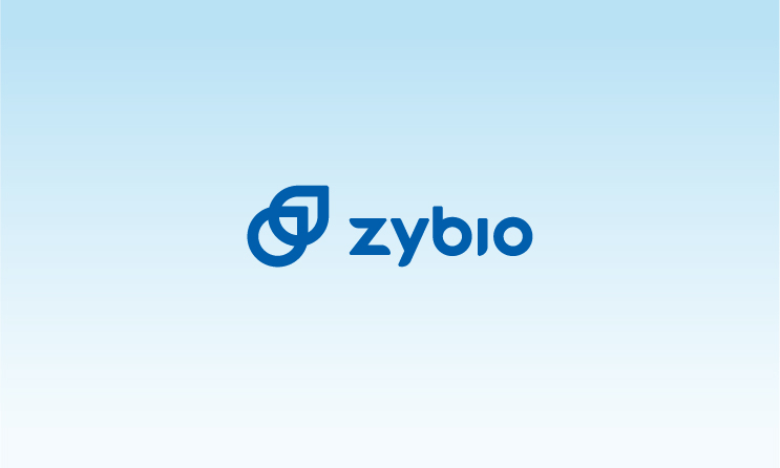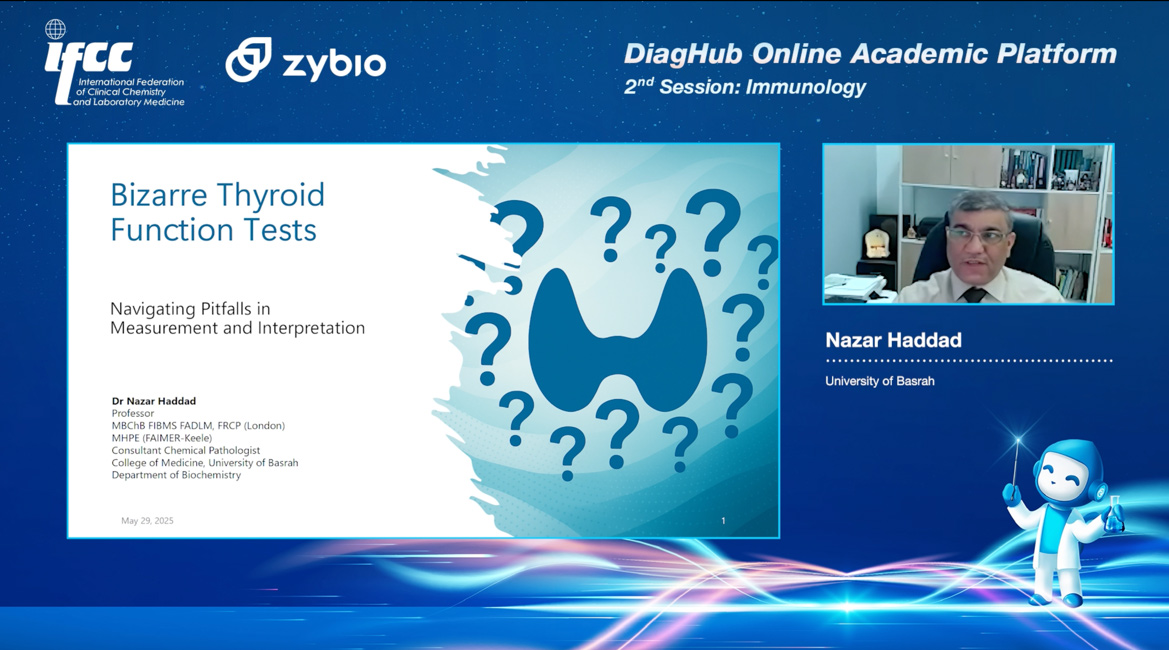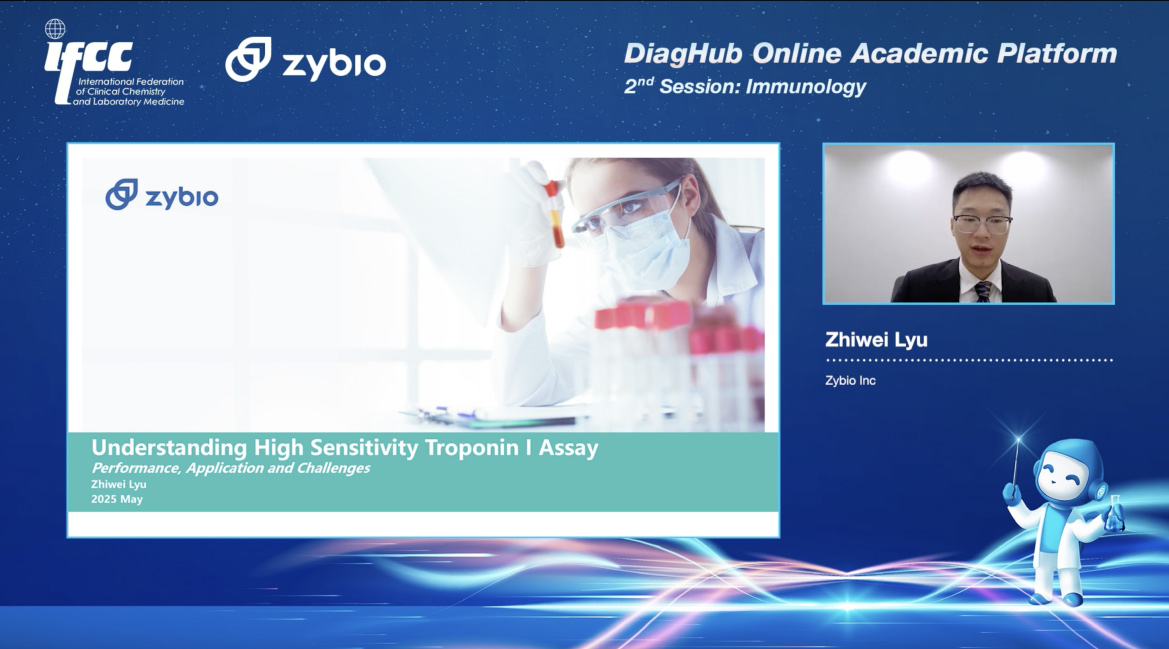DiagHub Online Academic Platform: The second session on Immunology Concludes Successfully
May 30, 2025 Zybio News
-

September 26, 2025
DiagHub Online Academic Platform The sixth session on Hematology Concludes Successfully – Highlights Recap
-

August 29, 2025
DiagHub Online Academic Platform The fifth session on Microbiology Concludes Successfully – Highlights Recap
-

August 22, 2025
Zybio hs-cTnI Assay Achieves IFCC C-CB Listing: Global Witness for Excellence in Cardiac Diagnostics
The second session of the DiagHub Online Academic Platform, themed Immunology in Clinical Diagnostics, concluded successfully on May 29, 2025, with IFCC auspices. Moderated by Prof. Dr. Akram Daghidi (Egypt), a hematology and immunology authority, the session featured two groundbreaking lectures: Prof. Dr. Nazar Haddad (Iraq) decoded complexities in thyroid function testing, while Zhiwei Lyu (China) unveiled advancements in high-sensitivity troponin I (hs-cTnI) assays.

Bizarre Thyroid Function Tests by Prof. Dr. Nazar Haddad

Prof. Narzar Haddad introduced the fundamental principles of Hypothalamic-Pituitary-Thyroid hormone interactions, outlining six common diagnostic patterns in thyroid function assessment.
Building on this framework, he presented “Seven Pitfalls" in thyroid function test interpretation through clinical case studies. A standout case contrasted RTH and TSHoma: RTH shows exaggerated TSH response to TRH stimulation, while TSHomas exhibit blunted responses, necessitating pituitary MRI. "Never interpret TFTs in isolation—context is king," he reinforced the critical role of his five-step diagnostic algorithm (Steps 1-5).
Step 1: Re-evaluate clinical history.
Step 2: Re-assess thyroid status.
Step 3: Decide which TFT is most likely discordant.
Step 4: Exclude TH &/or TSH assay interference.
Step 5: Investigate for rare genetic/acquired HPT disorders
Finally, he emphasized that beyond meticulous stepwise approaches and awareness of diagnostic pitfalls to prevent misdiagnosis and inappropriate management, enhanced communication and collaboration with clinicians is paramount in thyroid function diagnostics.
Understanding High Sensitivity Troponin I Assay by Zhiwei Lyu

Zhiwei Lyu’s lecture showcased Zybio’s breakthrough in high-sensitivity troponin I (hs-cTnI) assays, validated through a rigorous 1,600-subject study. The reagent achieved a 92.78% detection rate in healthy populations (93.7% males, 92.0% females) with a CV of 4.44% at the 99th percentile—exceeding IFCC’s ≤10% threshold. Lyu emphasized how stricter inclusion criteria (normal lipids, ECG, blood pressure) refined reference intervals, reducing false positives.
Clinically, hs-cTnI enables 0/1-hour rapid triage protocols, slashing AMI diagnosis time from 6h to 3h. Data revealed a 20% drop in unstable angina misdiagnosis when combining hs-cTnI with ECG/BMP. Lyu warned of challenges: elevated hs-cTnI in CKD or heart failure requires nuanced interpretation. He demonstrated Zybio’s multi-marker strategy (hs-cTnI + D-dimer + BNP) to differentiate AMI from PE or aortic dissection. Post-talk polls noted 76% of cardiologists plan to adopt rapid algorithms, signaling a paradigm shift in ACS management.
The presentations bridged cutting-edge research with actionable clinical solutions, igniting vibrant debates in the Q&A. Join us for future DiagHub events as we pioneer the next frontier of diagnostic innovation!